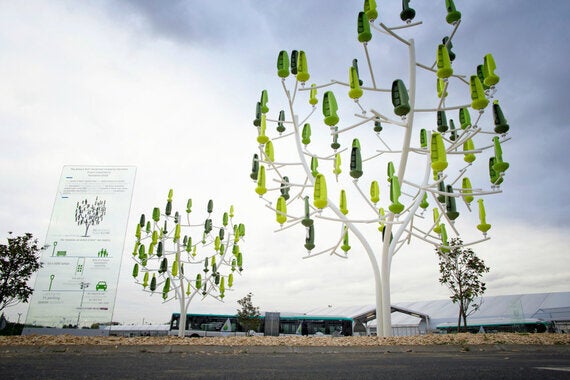
The Paris Agreement reached on 12 December is a triumph of the human spirit, built around the world class diplomacy of France, the UNFCCC Executive Secretary Christiana Figueres and UN Secretary General Ban-ki Moon. Faced with an existential threat driven by climate change, 195 nations signalled a fundamental shift in the trajectory of growth of fossil fuels.
We must imperatively turn our attention to the immense implementation gap between what's going on in the real world and the broadly aspirational objectives of Paris: Indeed there is a stark disconnect between what the world says it needs and wants (de-carbonization as soon as possible, through massive deployment of renewable energy worldwide and the electrification of everything), and where the $150 trillion financial markets (in other words, the money) are at.
Renewables Mess
We will need to invest $16.5 trillion to ensure we don't exceed the 2 degrees milestone now enshrined in the Paris Agreement. How do we unlock this money from the capital markets when clean energy is operating in a confusing, uncertain environment?
Here are a few examples of the mess we are in.
In the United States, renewable energy champions are being brutally punished. Their stock prices are down 50 to 90 per cent this year and they are unable to raise funds to accelerate deployment. Utilities like NRG attempting to change with the times through rapid solar deployment are suffering the same fate, their visionary leaders shown the door. Regulatory uncertainty abounds: The tax benefits for solar investments in the US are up in the air from 2017, even though these merely level the playing field vis a vis oil and gas investments.
Meanwhile in the UK, the government seems to relish surprising the markets by suddenly shifting support from clean energy back to oil and gas. In Spain, Abengoa, the renewables champion, collapsed. In Italy and Spain, investors are still getting over the harm caused by retroactive regulatory changes.
In India and China, thousands of projects are chasing capital but can't find it.
It does get worse.
According to an analysis by Climate Action Tracker, there are 2,440 new coal plants currently being planned worldwide, more or less guaranteeing we will all fry.
These planned coal plants are, as we speak, being financed by many of the same Governments and banks present at the Paris climate talks. Four countries whose citizens are at the forefront of suffering from the impacts of climate change - China, India, Indonesia and the Philippines - together account for three quarters of the planned 2,440 coal plants.
"Where is my $16.5 Trillion?"
The mess I describe above has consequences.
A large chunk of the $16.5 trillion will have to be invested in the form of equity capital, and the balance borrowed from banks.
But equity investors, rattled by too many conflicting signals, add a risk premium to invest in the infrastructure required to de-carbonize the world. This is the exact opposite of the direction of travel set by the Paris Agreement.
Many banks and other debt providers are talking climate but financing coal. A report by Bank Track shows banks supported coal with a whopping $257 billion between 2009 and 2014.
In practical terms, both the equity and debt necessary to finance the de-carbonization of everything is missing in action.
So how do we unlock the $16.5 trillion required to de-carbonize?
Here's the "ABC" of what's needed.
The "ABC" of Bridging the Implementation Gap
First, the Paris Agreement needs much more work to ensure it is tightened over time. At the moment, the signal it is sending to the financial markets is inconsistent and therefore in practice inaudible.
For example, fossil fuel subsidies must decrease over the next twelve months (instead of increasing as they have in the UK), while banks financing coal need to be stridently named and shamed.
Second, both developed and developing countries need to put in place financial-grade regulatory environments: Flip-flopping on policies, retroactive changes, inconsistencies and the lack of stable, long-term regulatory frameworks will maintain the current high risk premium for clean energy investments.
Third, we need a carbon price everywhere, of $40 a ton of CO2 or higher ($100 by 2020), embedded in the terms of trade between nations. While carbon pricing is talking about a lot, an effective one remains unlikely in the next few years.
In the meantime, our best hope is a worldwide push to ensure investors understand that their fiduciary duty includes analysing the long term risks caused by the exploration and production of fossil fuels. This can shift a mountain of investments from dirty to clean energy through the process of re-allocating risk premiums to fossil fuel investments instead of clean energy.